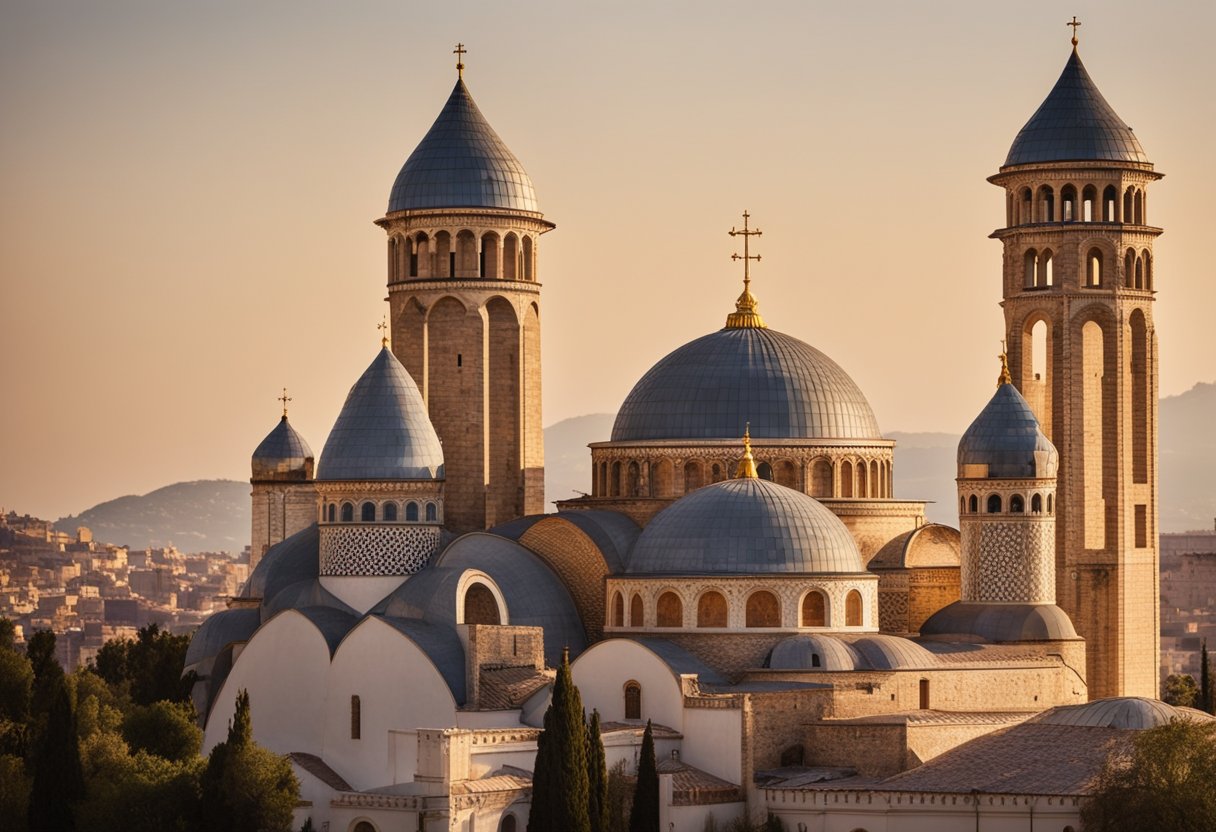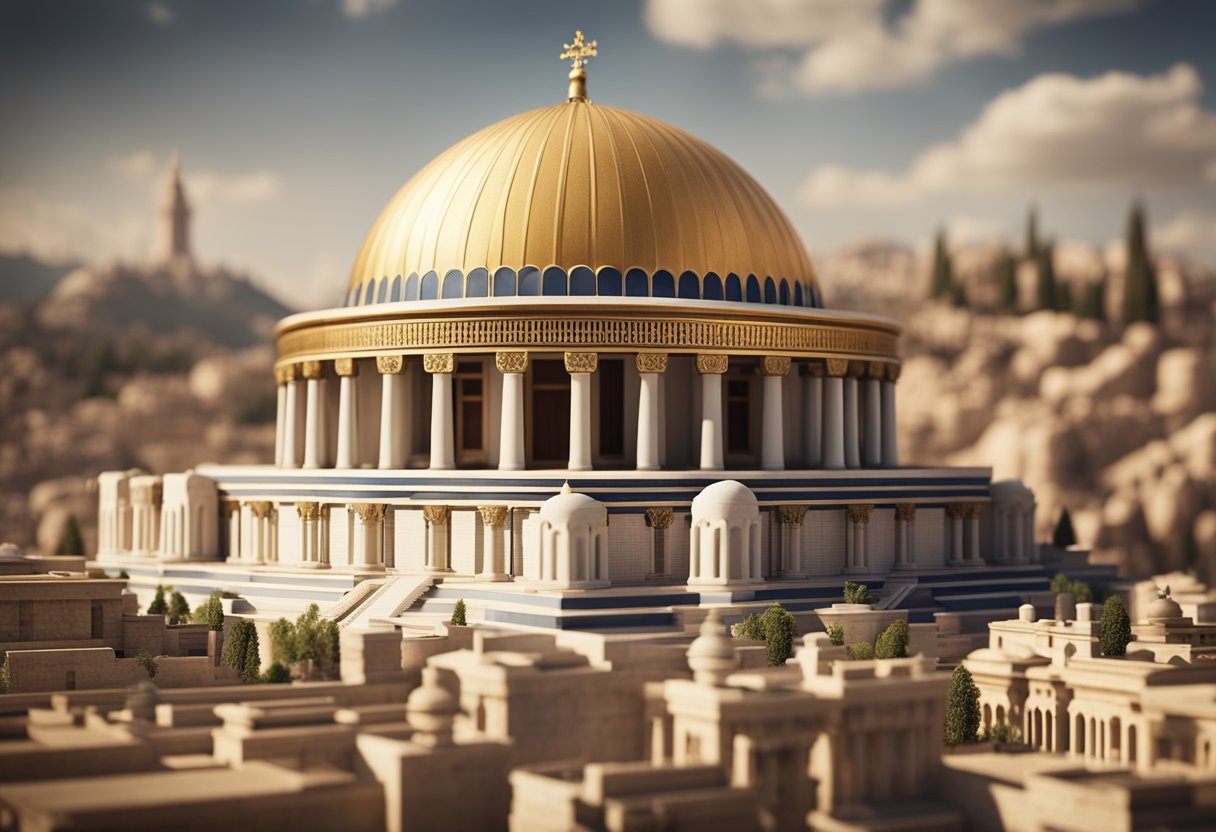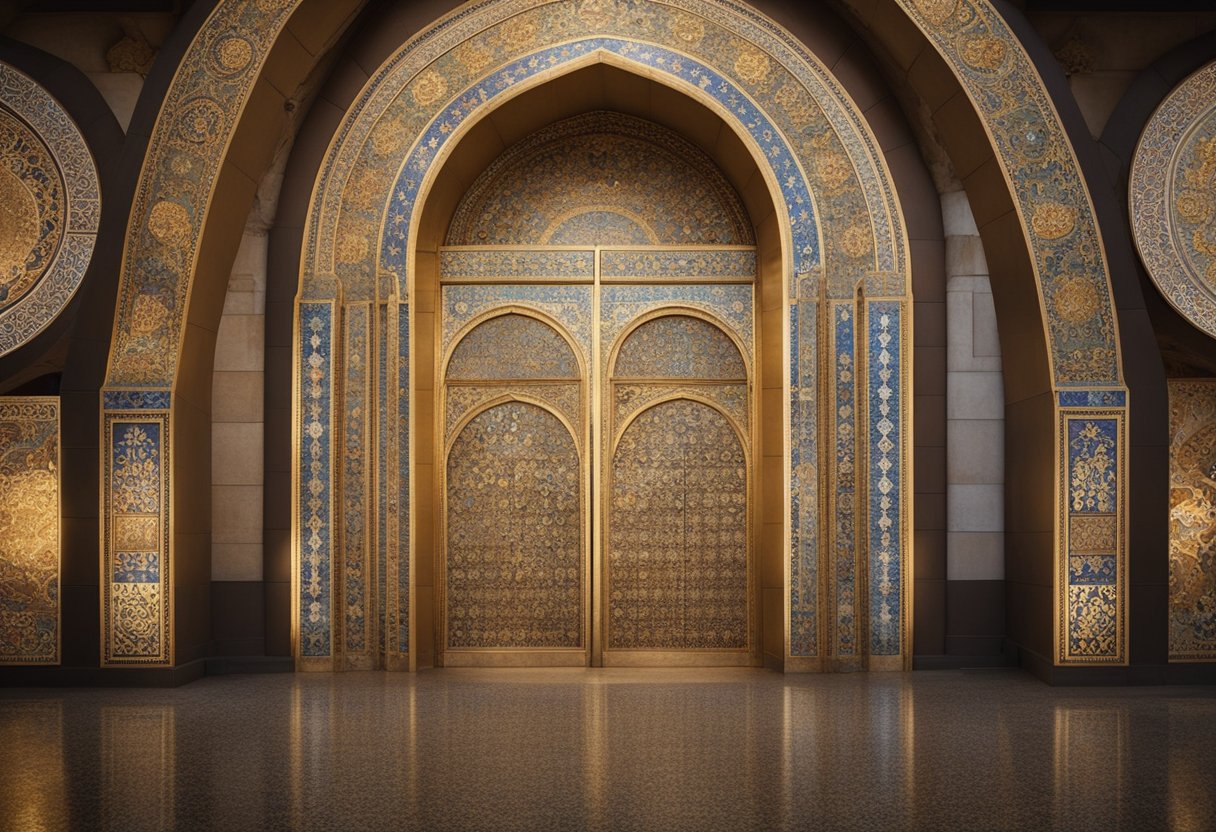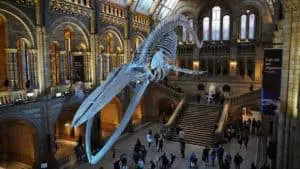East Meets West: Uncovering the Byzantine Empire’s Role in Cultural Integration

Updated On: April 23, 2024 by Yasmin Elwan
The Byzantine Empire stood as a formidable bridge between East and West, serving as a unique crucible where cultures, religions, and ideas intermingled. As the eastern remnant of the Roman Empire, it endured for over a millennium, with Constantinople as its glistening capital—a city that embodied an amalgamation of classical Greek, Roman, Christian, and Eastern influences. This enduring empire forged a legacy that laid the foundations for modern governance, law, art, and cultural exchange, ensuring its lasting influence on civilisations that followed.

Positioned at the crossroads of Europe and Asia, the Byzantine Empire facilitated unparalleled trade and cultural exchanges that still reverberate through time. Its sophisticated systems of government and legislation served as a blueprint for later empires, while the state’s entwinement with the Orthodox Church set precedents for the role of religion in governance. The Empire’s potent military and societal structures underscored a complex and often tumultuous relationship with its neighbours, both allies and adversaries.
The Birth and Growth of the Byzantine Empire

Following the sprawl of the Roman Empire, the emergence of the Byzantine Empire marked a profound era where the East truly met the West. We’ll explore the pivotal role of Constantine I in establishing the new capital at Constantinople and how this empire evolved over centuries to become a cultural and economic hub of the ancient world.
Constantine I and the Foundation of Constantinople
In AD 330, Emperor Constantine I proclaimed the ancient city of Byzantium as the new Rome, renaming it Constantinople. This strategic move shifted the centre of power eastwards, laying the foundations for what we now recognise as the Byzantine Empire. Constantinople, positioned at the crossroads between Europe and Asia, was destined to become a melting pot of cultures, religions, and commerce. Constantine’s vision of a New Rome as the Eastern Roman Empire’s capital was a significant moment that reshaped the ancient world’s political and cultural landscape.
The Eastern Roman Empire’s Evolution
Over time, Constantinople flourished under the reign of influential leaders like Justinian I, who further solidified the Eastern Roman Empire’s authority. His reign saw the introduction of comprehensive legal codes and the reconstruction of the renowned Hagia Sophia, reflecting the empire’s growing strength and sophistication.
As the Western Roman Empire disintegrated, the eastern half endured, preserving Roman legacies and blending them with emerging Greek influences. The empire’s capacity to adapt and integrate various cultural elements was instrumental to its endurance, fostering a unique identity that withstood the tumultuous shifts of medieval geopolitics.
The narrative of Constantinople and its rulers depicts the Byzantine Empire not merely as a continuation of Roman traditions but as a dynamic entity that bridged the ancient and medieval worlds. Our appreciation of this empire’s journey through history is vital in understanding how two great civilisations intersected to forge a legacy that endured for over a millennium.
Political Structure and Legislation

Before exploring the specific facets of the Byzantine Empire’s governance, one must recognise that its political structure was intricately tied to its legal framework, both of which were grounded in a legacy inherited from Roman institutions. This section delves into the intricacies of how the empire was governed and the profound significance of Roman law on its legislation.
Governance and Administration
The Byzantine Empire’s administration was centred around the figure of the emperor, who wielded supreme authority. These rulers were supported by a sophisticated bureaucratic system which upheld the operational aspects of governance. This system featured various divisions known as themes, which were both administrative districts and military sectors. Each theme was governed by a strategos, exhibiting a unique blend of military and civil duties that typified Byzantine governance. Despite the emperor’s dominant role, a measure of consultation with advisory bodies akin to the Roman Senate helped in deliberating matters of state.
Influence of Roman Law
Roman legal traditions significantly shaped Byzantine legislation. Emperors like Justinian I were instrumental in the codification of Roman law, which culminated in the creation of the Corpus Juris Civilis—a monumental legal code that left an indelible mark on the civil law traditions of modern Europe. This codification not only refined existing laws but also ensured that legal disputes could be settled by referring to a comprehensive set of statutes, thus sustaining the legal continuity from the Roman Empire to Byzantium. The application of these laws was evident in everyday societal dealings, and they underpinned the empire’s overall judicial ethos.
Religion and the State
In the Byzantine Empire, the interweaving of religious and political life was a defining characteristic, with Christianity becoming a formidable force shaping its identity and governance.
Christianity’s Dominance
Christianity served not only as a personal faith but also as a cornerstone of Byzantine state ideology. Under Emperor Constantine I, we saw the formal endorsement of Christianity as the state religion, setting a precedent for the interdependence of church and state. This foundational shift reinforced the Emperor’s divine right to rule, and the Christian church became a unifying symbol of imperial authority. The state’s embrace of Christianity heralded the construction of monumental churches, such as Hagia Sophia, and the patronage of religious art, while policies like iconoclasm caused significant controversy and division within the empire.
The Schism: Divergence of Eastern and Western Churches
The East-West Schism in 1054 marked a significant moment in religious history with lasting implications for the Christian world. Tensions over theological disputes, liturgical practices, and political conflicts led to the mutual excommunication between the Roman Catholic Church and the Eastern Orthodox Church. The division crystallised the differences that had been growing for centuries, with Orthodox Christianity becoming synonymous with the Eastern tradition, diverging in practices and beliefs from the Roman Catholic West. The schism solidified the notion of a Christian world no longer united under a single ecclesiastical authority but rather aligned along cultural and geopolitical lines.
Economic Foundations and Trade

In our exploration of the Byzantine Empire’s economic underpinnings, we concentrate on how trade and taxation served as the cornerstones of a system that both sustained and expanded the empire’s prosperity.
Byzantine Commerce
Byzantine commerce was the lifeblood of the empire, fostering an environment where local industries thrived. Regional products, such as silk from the provinces, became not only symbols of imperial wealth but also vital commodities in international trade. The state exerted control over commerce, implementing a system of taxes that facilitated regulation and revenue collection. Within this framework, merchants played a key role, and Constantinople became a bustling hub where culture and commerce intermingled.
Trade Routes and Economic Expansion
The Black Sea region and the Silk Road were pivotal in the empire’s economic expansion. These trade routes enabled a fusion of Eastern and Western commodities, ranging from spices and silk to Byzantine textiles and artworks. The empire’s unique position as a crossroad between continents meant that goods and cultural influences flowed through its provinces. This not only enhanced the Byzantine market economy but also contributed to the cultural and economic dynamism that defined the empire through the centuries.
Cultural and Artistic Achievements

In the Byzantine Empire, art and culture flourished, leading to a distinctive style that would impact the Renaissance and beyond. The empire’s role as a cultural bridge between East and West was manifested in its art and scholarship, which had an enduring legacy.
Byzantine Art and Architecture
Byzantine art is renowned for its opulent aesthetics, often characterised by the use of gold mosaics and a spiritual depth. Our Hagia Sophia stands as a testament to this legacy, with its grand dome and intricate decorations emphasising the Empire’s architectural prowess. The cross-cultural interactions within the empire introduced vibrant art forms and techniques, influencing styles across Europe and the Near East.
In terms of architecture, Byzantium introduced innovative structural solutions, including the use of pendentives and squinches, which allowed for larger and more complex domes. This architectural ingenuity is epitomised by the Hagia Sophia, which has inspired countless other religious structures throughout the world.
The Preservation and Contribution to Knowledge
The Byzantine scholars were instrumental in preserving the scientific and philosophical texts of the ancient Greeks and Romans, thus bridging the cultural gap between antiquity and the European Renaissance. This vast repository of knowledge fostered an intellectual environment ripe for the development of humanism. It’s important to note that during the Byzantine era, these works were not only preserved but also expanded upon in fields such as theology and history.
The Empire’s focus on education ensured that this wealth of knowledge was accessible to a wide array of scholars, who could study and copy these works in the numerous scriptoria dotted throughout Byzantium. The diffusion of this literary treasure trove had a notable influence on the cultural rebirth in Western Europe, known as the Renaissance.
Our contributions in the realm of culture and artistry weren’t confined to ornate mosaics and monumental domes; we also played a key role in the intellectual and artistic revival that was to sweep across Europe, giving birth to new eras of enlightenment.
Military Systems and Warfare

In the study of the Byzantine Empire’s endurance, our attention turns to its military structures and methods of warfare, which were central to its ability to bridge East and West.
Defensive Strategies and Fortifications
Our military systems were primarily influenced by the intricate themes, or Themata, system. This served as both an administrative division and a regional defence infrastructure across the empire. We stationed forces in each theme not just for ease of governance but to ensure readiness against foreign incursion. In terms of fortifications, we employed heavily fortified walls that defined our capital, Constantinople, which helped deter and delay various enemies, including the Arabs and the Seljuk Turks.
Notable Conflicts and Enemies
Our history is marked by significant conflicts, which informed our military evolution. The Battle of Manzikert in 1071 was among these pivotal engagements where we faced the Seljuk Turks. Unfortunately, the defeat we suffered greatly affected our military and territorial integrity. Furthermore, our confrontations with the Normans and their militaristic expansion presented us with challenges in the west. Both the Arabs and the Normans required us to adapt our military approaches and defensive measures consistently.
Society and Social Structures

In the Byzantine Empire, socio-political dynamics were complex, weaving through a system where class, family, and land ownership played crucial roles. The robust class hierarchy and the central importance of family and agricultural life formed the backbone of society.
Class Divisions and Nobility
The Byzantine social order was underpinned by a distinct separation between the nobility and common people. The imperial family led society, followed by a powerful aristocracy, who held significant influence both politically and economically. Nobility controlled vast tracts of land and maintained authority over the peasantry. Their lives were marked by luxury and political intrigue, with opportunities for social mobility often arising from military service, administrative roles, or alliances formed through marriage.
The Role of the Family and Peasants
At the societal foundation lay the family unit, serving as the central institution around which daily life revolved. Marriage reinforced social ties and ensured the continuity of familial lineage and property. The majority of the populace were peasants, whose lives were intertwined with agriculture, as they toiled on lands, some of which they owned and some held by the nobility. Slavs constituted a significant portion of the population and worked the fields alongside native peasants, contributing to the empire’s agricultural output.
Interactions with Neighbouring Territories

The Byzantine Empire, with its strategic position, engaged in both diplomatic and martial exchanges with its neighbours. Our empire’s position facilitated cultural and linguistic amalgamations, influencing and being influenced by a mosaic of neighbouring territories.
Diplomacy and Marriage Alliances
We, the Byzantines, often employed strategic matrimonial alliances to solidify our stance in regions like the Balkans and Eastern Europe. Our nobility exchanged marriage vows with neighbouring rulers, intertwining diverse cultures and strengthening political ties. Such unions served to extend the reach of the Greek language and Byzantine customs, concurrently bringing Latin influence into our empire.
Conflict and Cooperation with Neighbours
Our interactions were not confined to peaceful exchanges; we also had bouts of conflict with certain neighbours, such as the powerful Republic of Venice. Utilising our formidable navy, we protected our interests across the Mediterranean. Meanwhile, to the north, we encountered various Slavic groups, including the Serbians and Russians. With some, we found common ground and cooperated, evidenced by the adoption of Orthodox Christianity in Russia, which had profound cultural consequences for both our empire and the Slavic world.
The Decline of the Byzantine Empire
As we explore the Byzantine Empire’s twilight years, it becomes evident that a combination of internal strife and relentless external pressures culminated in its eventual decline. Let’s examine the particulars of these catastrophic periods, taking into account the most critical factors that led to the empire’s downfall.
Internal Crisis and Territorial Losses
The empire’s decline was precipitated by a series of internal crises, with rampant corruption at the heart of its fading supremacy. The once-unified society suffered from political instability, characterised by a frequent succession of rulers who were often installed through violent means. This turbulence eroded the administrative structure, leading to territorial losses. Prominently, the Fourth Crusade in 1204, a catastrophic event in its own right, resulted in the sacking of Constantinople and a significant reduction in Byzantine influence.
External Threats and the Fall
On the external front, the Byzantine Empire faced ceaseless challenges. The ascendancy of the Ottoman Turks proved to be a formidable force. As the Ottomans consolidated their power, the empire’s territories dwindled, with critical battles leading up to the fall of Constantinople in 1453. This event not only marked the end of the Byzantine Empire but also signalled a transformative moment in history, as the city, known today as Istanbul, was absorbed into the sprawling Ottoman Empire.
Byzantine Legacy and Its Influence on Modern Culture
The Byzantine Empire served as a pivotal bridge between the Western Roman Empire and the Eastern territories, merging elements of Greek language, Christianity, and classical heritage. Its cultural impact is notably evident in both Western Europe and the Eastern Orthodox Church, propagating a distinct legacy that permeates through to modern times.
Remarkably, the empire’s influence played a crucial part in the blossoming of the Renaissance, inspiring a rejuvenated interest in the arts and sciences. Through the preservation and transmission of ancient Greek and Roman texts, Byzantine scholars provided the West with the essential knowledge that fuelled intellectual revival.
In the realm of religion, the division of the Christian world into the Roman Catholic Church and the Orthodox Church during the East-West Schism marked a profound split that still echoes today. Despite this division, the Byzantine legacy on religious art, architecture, and liturgy remains a uniting factor across various Christian denominations.
The Normans and other societies of the Middle Ages were also influenced by the Byzantines, especially in regions such as Bulgaria, where Byzantine cultural practices merged with local customs. This cultural synthesis crafted the multifaceted tapestry of European history, contributing to the rich heritage that defines our shared past.
Impact on Religion:
- Orthodox Church: Shaped icons, liturgy, and architecture
- Roman Catholic Church: Influenced religious practices and art
Cultural Contributions:
- Art and Architecture: Iconography and domed structures
- Language: Dissemination of Greek texts and philosophy
Our contemporary society continues to benefit from the Byzantine Empire’s enduring legacies, often in subtle but significant manners that underpin the vast narrative of human civilisation.
Key Personalities and Their Impact

Throughout its history, the Byzantine Empire was shaped by a number of influential rulers and thinkers who left an indelible mark on its cultural and political landscape. These key personalities fostered the blend of Greco-Roman traditions with Christian and Eastern influences, ultimately bridging Western and Eastern cultures.
Influential Emperors and Empresses
- Emperor Constantine I:
Commonly known as Constantine the Great, he played a pivotal role as the first Roman emperor to convert to Christianity and establish Constantinople as the new capital in 324 AD. His reign marked significant cultural and religious shifts that would define the empire for centuries. - Emperor Justinian and Empress Theodora
Justinian’s rule witnessed the height of Byzantine cultural and political power. Alongside his formidable wife Theodora, he embarked on ambitious public works, including the Hagia Sophia, which remains a testament to Byzantine art and architecture. Theodora, in her own right, made substantial contributions to the empire’s social policies, advocating for women’s rights and influencing her husband’s decisions. - Empress Irene:
As the first woman to hold the title of Emperor in her own right, Irene was a formidable leader noted for her restoration of the use of icons in the Orthodox Church. - Michael III:
His reign is marked by the cultural renaissance of the 9th century, which saw the spread of Byzantine influence into Eastern Europe.
Prominent Scholars and Architects
Cyril Mango: While not a contemporary figure of the empire, Mango’s contributions as a modern historian have been instrumental in our understanding of Byzantine culture and architecture.
Byzantine scholars were instrumental in the preservation and continuation of Graeco-Roman literature, philosophy, and science. The well-known John Julius Norwich, though a modern historian, chronicled their efforts and the resulting impact on the Renaissance and Western history.
These figures, among many others, played crucial roles in the empire’s enduring legacy that bridged the East and West, establishing foundations that continued to echo throughout the Holy Roman Empire and beyond into modern times.
Frequently Asked Questions

In this section, we address some of the most prevailing inquiries about how the Byzantine Empire served as a cultural conduit between East and West.
What factors contributed to Constantinople’s establishment as the Byzantine Empire’s centre?
Constantinople’s strategic geographical location facilitated its rise as the core of the Byzantine Empire, enabling it to thrive as a nexus for commercial, political, and ecclesiastical activities. It was well-positioned for defence and trade, connecting the Black Sea with the Mediterranean.
In what ways did Greek Orthodox beliefs and practices impact Byzantine society?
Greek Orthodox Christianity profoundly shaped Byzantine social norms, art, and statecraft. Its influence is evident in the empire’s iconography and church architecture, which aligned closely with religious beliefs and became integral to societal identity.
How was the Byzantine economy affected by trade with West Africa?
Trade with West Africa introduced gold and other valuable commodities to the Byzantine economy, bolstering its wealth. Byzantine merchants exchanged textiles, glassware, and precious stones, aiding the empire’s commercial prosperity.
What role did the Christian Church assume within the Byzantine Empire?
The Christian Church served as a pivotal institution in Byzantine governance and daily life. It influenced laws and education while the Patriarch of Constantinople grew to be a vital counterpart to the emperor.
Which achievements of the Byzantine Empire were preserved, and why are they deemed significant?
The preservation of Roman legal codes, artistic and architectural innovation, particularly the Hagia Sophia, and contributions to the foundation of the Renaissance are among the empire’s celebrated achievements. These have remained significant due to their enduring impact on culture, law, and art.
What were the mechanisms through which Byzantine culture was disseminated to Eastern Europe?
Byzantine culture spread to Eastern Europe through religion, trade, and dynastic marriages. The creation and adoption of the Cyrillic script and the Christianisation of the Slavic peoples stand out as ways in which Byzantine influence extended to these regions.






